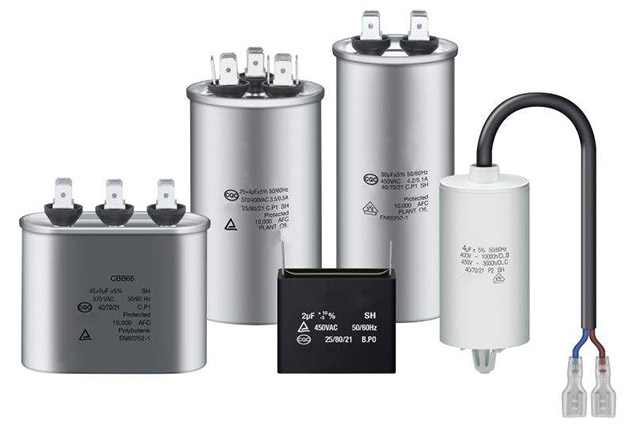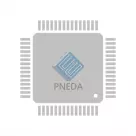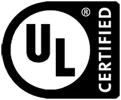Capacitors have four main functions: energy storage, filtering, bypass, and decoupling

A capacitor is the ability to hold an electric charge. Any electrostatic field consists of many capacitors. When there is an electrostatic field, there is a capacitor. Capacitors are described as electrostatic fields. It is generally believed that an isolated conductor is formed with an endless capacitor, and that a conductor grounded is equivalent to connecting to an endless capacitor and connecting to the Earth as a whole. Capacitors have four main functions: energy storage, filtering, bypass, and decoupling.
1. A capacitor is a charge and a discharge. How can we understand filtering, decoupling, and bypass using capacitor charging and discharging?
The separation of capacitance and DC is easy to understand by AC current, but difficult to understand by AC current. As long as you understand alternating current, you can understand filtering, coupling, and bypass.
Capacitors charge and discharge, fine, but the direction of the AC current alternates in positive and negative directions, and the amplitude varies periodically. The whole thing is a sine curve.
The capacitor is connected to an alternating current. Because the AC voltage changes periodically, it also changes periodically. There is a charge and discharge current in the circuit. The charge and discharge current is exactly the same as the voltage, but the phase is 90 degrees ahead of the voltage, equivalent to alternating current through the capacitor.
Unlike alternating current through a resistor, which consumes electrical energy (heat) across the resistor, alternating current through a capacitor only exchanges energy with the power supply. When charging, the power supply sends energy to the capacitor. When discharged, the capacitor returns electrical energy to the power supply, so the power produced by multiplying the voltage by the current is called reactive power.
To be clear, when a capacitor is connected to an AC circuit, the flowing electrons (current) will not actually pass through the insulation, but will create a current in the circuit. This is because in the circuit, the reverse discharge and the forward charge are in the same direction.
Forward discharge and reverse charge are going in the same direction, like a relay race. One team runs the first half of the AC, and the other team continues to run the second half of the AC with the baton.
Assuming you know the capacitor and AC connection, then you can understand that the AC weight is bypassed to the ground and the filter is complete.
2. How to use bypass capacitor, filter capacitor and decoupling capacitor respectively?
In fact, all three terms of capacitors are filters, but they are used in different circuits, and their terminology and usage are different.
Filter capacitor: This is the capacitor we usually use after the power supply is rectified. It is by charging and discharging that capacitors rectify the alternating current of the rectifier circuit into pulsating DC, making it smooth. Such capacitors are usually large capacity microelectrolytic capacitors.
Bypass capacitor: Used to filter the high frequency weight in the input signal, mainly used to filter high frequency clutter. It is usually made of porcelain capacitors and polyester capacitors, with a small capacity, in leather layers.
Decoupling capacitor: Filter object is the interference of the output signal. The decoupling capacitance is equivalent to a battery. It can be used to charge and discharge electricity so that the amplified signal is not disturbed by sudden changes in current. Its capacity depends on the frequency of the signal and the degree of ripple suppression.
3. What are coupling capacitance and decoupling capacitance, and what are their characteristics and functions?
Coupling capacitors are used to transmit AC signals. It connects to the wire. The decoupling capacitor is used to remove unwanted AC signals. Connect to the wire and ground.
4. What is the function of a capacitor? What is capacitive coupling and capacitive filtering?
After all, the eighteen skills of a capacitor in a circuit are two! Charge it! Release the charge!
It is characterized by communication! Isolate DC! After adding AC voltage at both ends of the capacitor, it will charge and discharge continuously at the AC frequency of the current! At this point, the circuit has the same frequency of alternating current! That's the on/off property of a capacitor!
At the right frequency, a capacitor can use a circuit as a channel! The front AC output is transferred to the rear circuit through the capacitor, and is isolated for DC! Since the voltage at both ends is charged to equal the circuit voltage, there will be no more charging current. The lotus root acts on the AC signal before and after transmission. When filtering the fluctuation components and useless AC components, it is filtering.
Die Produkte, an denen Sie interessiert sein könnten
 |
AMI-27A-36-6 | LINE FILTER 250VAC 36A CHASS MNT | 4302 More on Order |
 |
AMI-28A-10-3 | LINE FILTER 110/250VAC 10A CHAS | 5778 More on Order |
 |
AMI-M12J-1-3-C | LINE FILTER 250VAC 1A CHASS MNT | 2970 More on Order |
 |
AMI-29A-10-3 | LINE FILTER 110/250VAC 10A CHAS | 3490 More on Order |
 |
AMI-M11N-1-3-B | LINE FILTER 250VAC 3A CHASS MNT | 8190 More on Order |
 |
AMI-22A-20-3 | LINE FILTER 250VAC 20A CHASS MNT | 5418 More on Order |
 |
AMI-29A-3-3 | LINE FILTER 110/250VAC 3A CHAS | 8838 More on Order |
 |
AMI-23B-3-3 | LINE FILTER 250VAC 3A CHASS MNT | 2196 More on Order |
 |
AMI-M11D-3-6-B-1 | LINE FILTER 250VAC 3A CHASS MNT | 2394 More on Order |
 |
AMI-M11VF-7-16-B | LINE FILTER 250VAC 7A CHASS MNT | 3906 More on Order |
 |
AMI-B11C-13-6-B-2 | LINE FILTER 250VAC 6A CHASS MNT | 3096 More on Order |
 |
AMI-27B-36-6 | LINE FILTER 110/250VAC 36A CHASS | 4446 More on Order |
 |
AMI-26-30-6 | LINE FILTER 250VAC 30A CHASS MNT | 7560 More on Order |
 |
AMI-28-16-1 | LINE FILTER 110/250VAC 16A CHASS | 6192 More on Order |
 |
AMI-29-20-1 | LINE FILTER 110/250VAC 20A CHASS | 4878 More on Order |
 |
AMI-27B-3-1 | LINE FILTER 110/250VAC 3A CHAS | 3636 More on Order |
 |
AMI-B11AW1-13-4-B | LINE FILTER 250VAC 4A PCB | 4176 More on Order |
 |
AMI-21-16-1 | LINE FILTER 250VAC 16A CHASS MNT | 4338 More on Order |
 |
AMI-22-10-1 | LINE FILTER 250VAC 10A CHASS MNT | 5832 More on Order |
 |
AMI-M11D-1-6-B-2 | LINE FILTER 250VAC 6A CHASS MNT | 7524 More on Order |
 |
AMI-M11A-1-1-D | LINE FILTER 250VAC 1A CHASS MNT | 7452 More on Order |
 |
AMI-21B-10-1 | LINE FILTER 250VAC 10A CHASS MNT | 2340 More on Order |
 |
AMI-21A-3-1 | LINE FILTER 250VAC 3A CHASS MNT | 4896 More on Order |
 |
AMI-21-10-1 | LINE FILTER 250VAC 10A CHASS MNT | 8334 More on Order |









